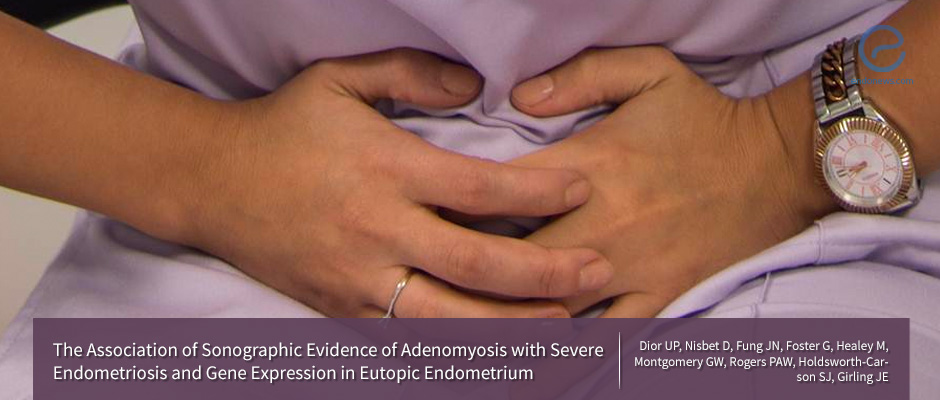What clinicians know about adenomyosis? Any association with severe endometriosis?
Jan 9, 2019
The association between adenomyosis and endometriosis severity is not well-known.
Key Points
Importance:
- There is no consensus about sonographic criteria of adenomyosis, but diagnosis can be made when echogenic sub-endometrial lines (known as also Venetian blind shadowing), myometrial cysts, heterogenous myometrium, and thickening or asymmetry of the myometrial wall are seen. Exact diagnosis will be histopathological.
Highlights:
- Further research is needed to characterize the predictive value of "Sonographic Evidence Of Adenomyosis - SEOA" and to explore the genetic pathways involved in adenomyosis pathology.
What's done here:
- To prosecute significant importance of the association between severity of endometriosis and sonographic signs of adenomyosis, the authors examined the sonographic characteristics consistent with adenomyosis in the patients who underwent diagnostic laparoscopy for endometriosis.
- Gene array analyses were made to explore whether gene expression in a eutopic endometrium in patients with adenomyosis differs from those without adenomyosis.
Key results:
- Thirty-five percent of women those attending in the clinic with pelvic pain have sonographic signs of adenomyosis.
- The most prevalent sonographic features noted in women with sonographic evidence of adenomyosis were heterogenous myometrium and thickened posterior myometrial wall.
- A thickened posterior wall was statistically significantly associated with moderate to severe endometriosis.
- Uterine pathologies are more common in women with SEOA.
Limitations:
- Ultrasonography to diagnosed adenomyosis before laparoscopy should be performed by skilled clinicians.
- This study focused on SEOA rather than the histopathologic finding of adenomyosis.
Lay Summary
Dior et al. from the Royal Women's Hospital in Parkville, Australia, designed a prospective study to assess the association between severity of endometriosis and sonographic evidence of adenomyosis (SEOA) in their recently published article appearing in The Journal of Minimally Invasive Gynecology. Their research also informs about the gene expression in eutopic endometrium to tell the difference in patients with or without adenomyosis.
The research included 234 women, with an average age of 30.6 years with pelvic pain symptoms, directed to a tertiary gynecologic clinic, and have a pelvic scan. This group divided into two subgroups by the presence or absence of "Sonographic Evidence Of Adenomyosis - SEOA" in their sonographies performed up to 12 months before their laparoscopic surgery.
Although while there was no significant difference between the two groups, patients with SEOA are more likely to have stage IV endometriosis. In SEOA diagnosed group, authors pointed out notably much severe endometriosis including deep infiltrated endometriosis and endometrioma. No significant difference was found between adenomyosis cases and the control group in terms of eutopic endometrial gene expression.
The significant association between SEOA and severe endometriosis suggested that women with pelvic pain clinic would benefit from ultrasound before diagnostic laparoscopic surgery.
Although some researches indicate that there are differential gene expression and long noncoding DNA expression in eutopic endometrium of women with or without adenomyosis, the current study was not able to find any significant difference between these two groups in their sample.
Research Source: https://www.ncbi.nlm.nih.gov/pubmed/30273686
adenomyosis severe endometriosis pelvic pain gene expression laparoscopy ultrasonography sonographic evidence of adenomyosis eutopic endometrium

